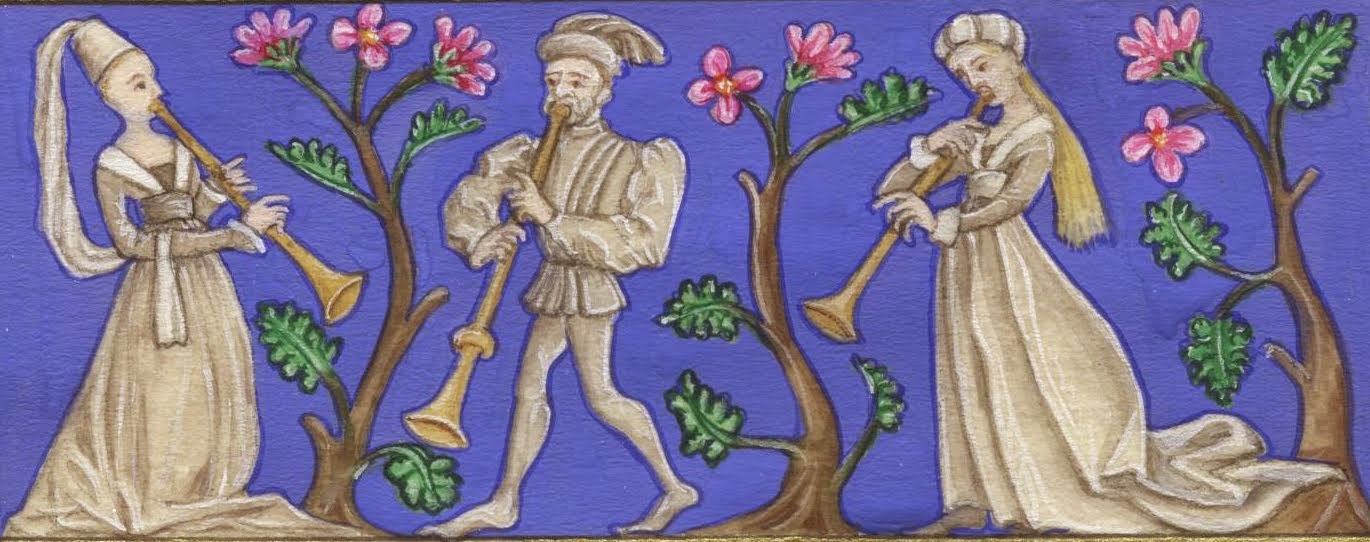For example it included everything from a completely made-up dance to the 13th century song 'Sumer is icumen in', via the 15th century Italian repertoire, to 16th century Arbeau branles, without really explaining the important differences. These include level of the evidence available for reconstruction (from 'make a guess from pictures', to 'choreographies but not explanations of the steps', to 'which foot to move where on each beat of the music'), but also big musical changes. In fact I have just noticed that the BBC website listing of the music played describes 'Dance de Cleves' and 'Washerwoman's Branle' as 'French 14th century' when they date from the late 15th and late 16th century respectively; and the 15th century Italian dances Rostibolli and Gelosia are also listed as '14th century'.
Given it is the 'Early Music' show it was also a pity there was no discussion of what is known about the instrumental ensembles that played for dancing. The programme included discussion of the Gresley manuscript which was nice, but then used as an example the dance 'Rawty' for which there is no actual music in the manuscript (the version played in the programme comes from the recent York Waits disk and was composed by them).
As so often seems to happen with early music, 'medieval' seemed to be shorthand for 'let's have some jolly fun' rather than seriously engaging with what is known about the repertoire.I somehow doubt they would accept such inaccuracies if making a programme about Baroque dance.
